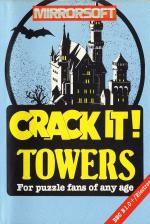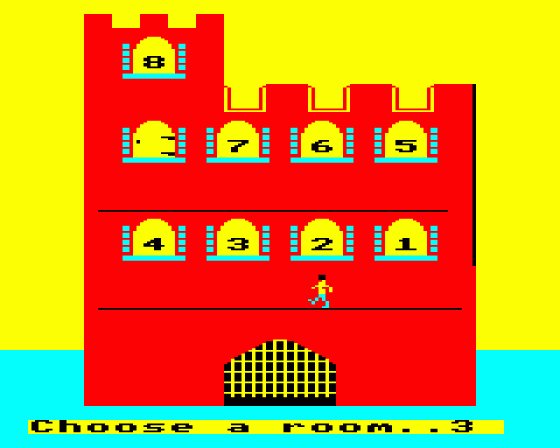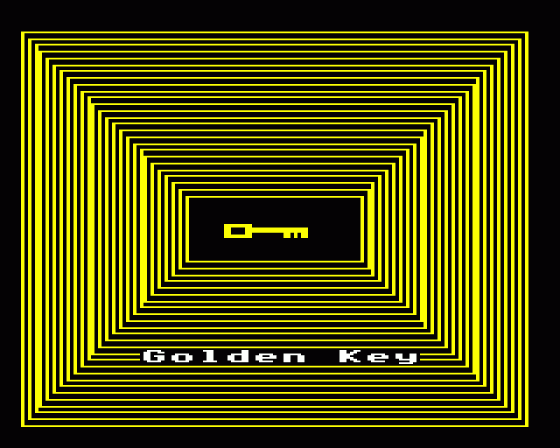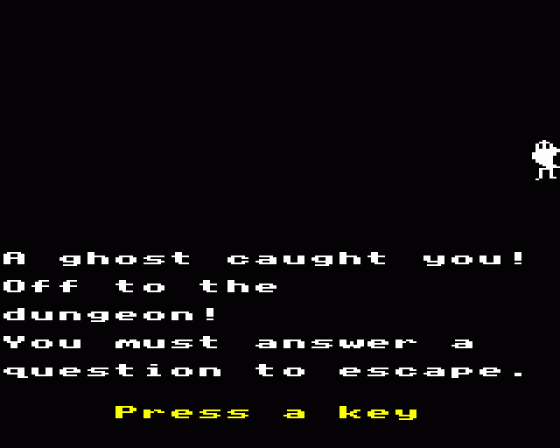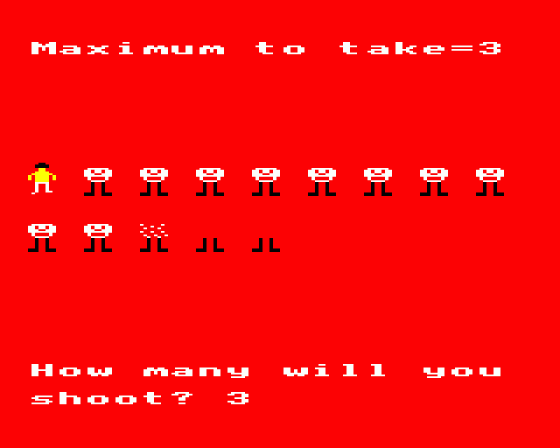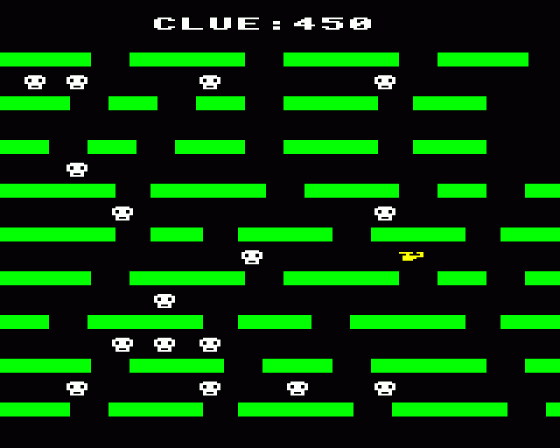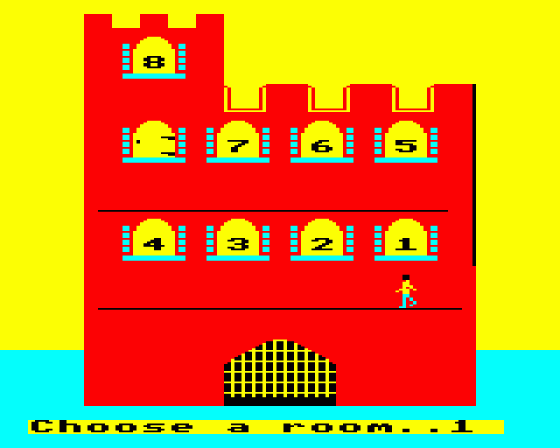
Everygamegoing
 26th August 2018
26th August 2018
Author: Dave E
Publisher: Mirrorsoft
Machine: BBC/Electron
Published in EGG #013: Acorn Electron
Crack It! Towers
The BBC Micro was supplied by the UK Government to schools across the country in the early Eighties, and it came to be thought of as a "school computer". Local education authorities would write software for the BBC and, as a child, I remember playing some quite sophisticated illustrated adventures on it that now seem to be lost to the sands of time. The Electron, on the other hand, was marketted as a games machine.
The BBC was expensive, the Electron was cheap. Some games that were written for the BBC would also run on the Electron, and vice versa. But there were no Electrons in schools, so the vast majority of educational software for the BBC was BBC only. Not only that, but few businesses wrote any educational software for either computer; after all, the local education authorities were already doing it, and already had a load of deals with schools all sewn up. There's not much incentive to enter that particular market.
Mirrorsoft's Crack It! Towers is therefore a bit of an anachronism. It's an educational game that actually works well, and it's a pity that few Electron owners gave it a go back in the Eighties.
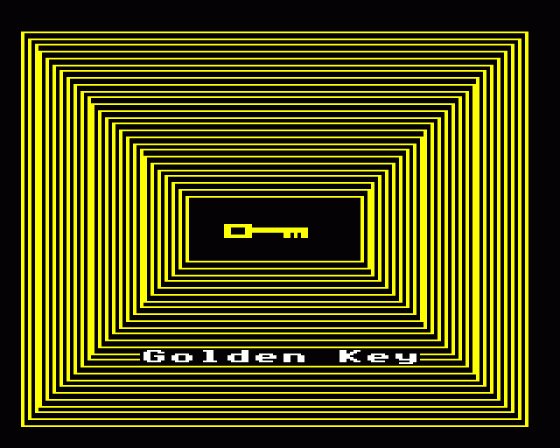
The scenario of the game is that you must collect up seven keys in order to enter room eight of Count Crack It's tower. When the game starts there's a (skippable) atmospheric introduction which reveals exactly how to play and after that the tower is depicted and the player is asked to choose a room. Each room is a puzzle game which involves some element of word or math skill, and some involve a bit of arcade skill too.
Before you can get into any room, you need to complete an addition sum, accompanied by a fitting animation of your man waiting outside the door. After you successfully complete any room, you can opt to enter the dreaded maze of skulls to search for a bonus key. If you do, you'll be presented with a simple maze game, a "clue" and a little submarine thing that you can move around. One of the skulls contains a key and the "clue" should help you deduce which one. Move the submarine around and blast the skull that you believe holds the key. Get it wrong and, well, some skulls are harmless and some are deadly...!
Something that's quite enjoyable about the game is the way it gets harder as you accumulate more keys. Every time you complete a room, for example, some of the Count's friends try to steal them from you. A spider drops into the playing area and must be batted away with the Space bar before he seizes a key. Likewise, an ugly bug tries to scuttle away with one on your current score screen. He must be defeated in the same way. In fact, once you've obtained more than three or so keys, every move you make has more jump-scares than your average horror film as you dart for the Space bar. And that's by no means all.
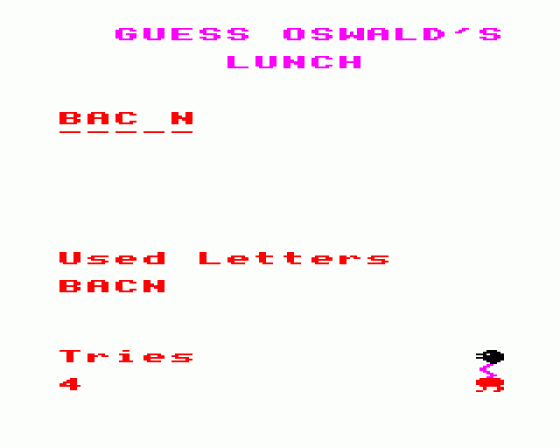
Several events happen at random during a game - there are power failures, in which you must spell a word correctly (or lose a key); white ghosts which present anagrams or a "guess my age between 1-99" game and, of course, if you're stupid enough to fail a room, you're thrown into the moat and must work out a fraction before one of your keys gets chomped upon by a piranha fish.
When a game is composed of many sub-games (None of them being particularly complicated), you sometimes find that it feels like a disordered collection of sketches rather than a coherent whole. In Crack It! Towers, however, the sub-games really do fit together well.
There are some bits of it that do have faults though - in one room, you're given a sum and you must use the Space bar to choose the correct answer from a constantly changing figure. Sometimes the answer changes after you've hit the Space bar and then registers your decision, tells you you got it wrong and then flings you in the moat. Another hangman-style game has a large vocabularly of words but seems to always show the same three or four words from it. And some sub-games are as much to do with luck as skill.
Crack It! Towers is an extremely rare game but I was actually fortunate enough to know someone at school who had it when I was a boy. You can imagine that the last thing most schoolchildren wanted to do on an evening was to play a game which was about English and Maths... and yet I did, quite avidly. And the fact that now my niece (aged six) really loves the game too is testament to just how good it is. It seems to be the combination of scenes, and the fact that they very quickly change, that keep the player enthralled. And all the cartoon-style spookiness, of course.
If you're looking for a physical version of this then I wish you good luck - although I remembered it from my youth, I had to wait about a decade to find a copy of it for sale secondhand. Expect to pay £20+.
Scores
BBC/Electron Version| Overall | 80% |
Scores
BBC/Electron Version| Overall | 80% |

